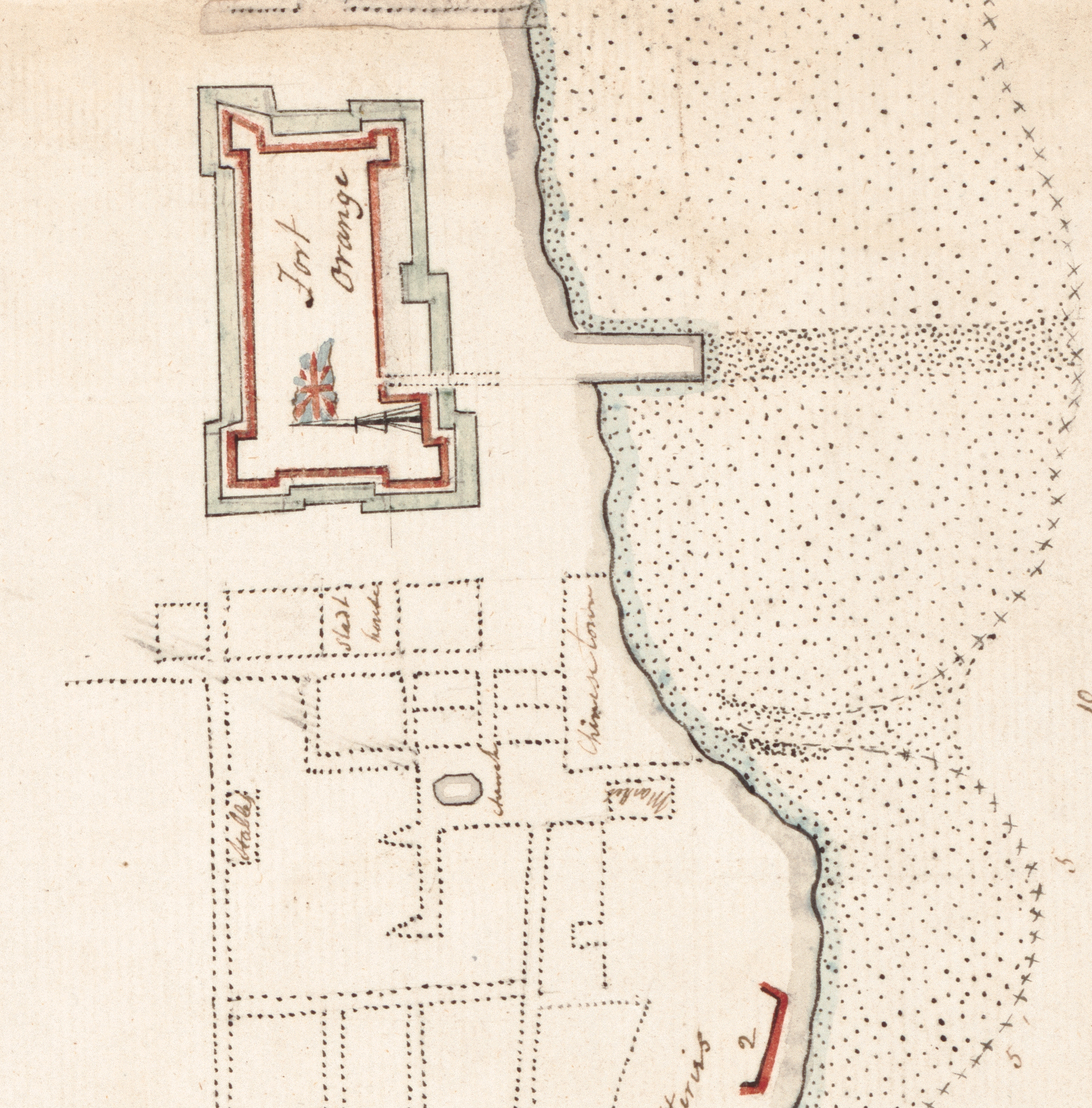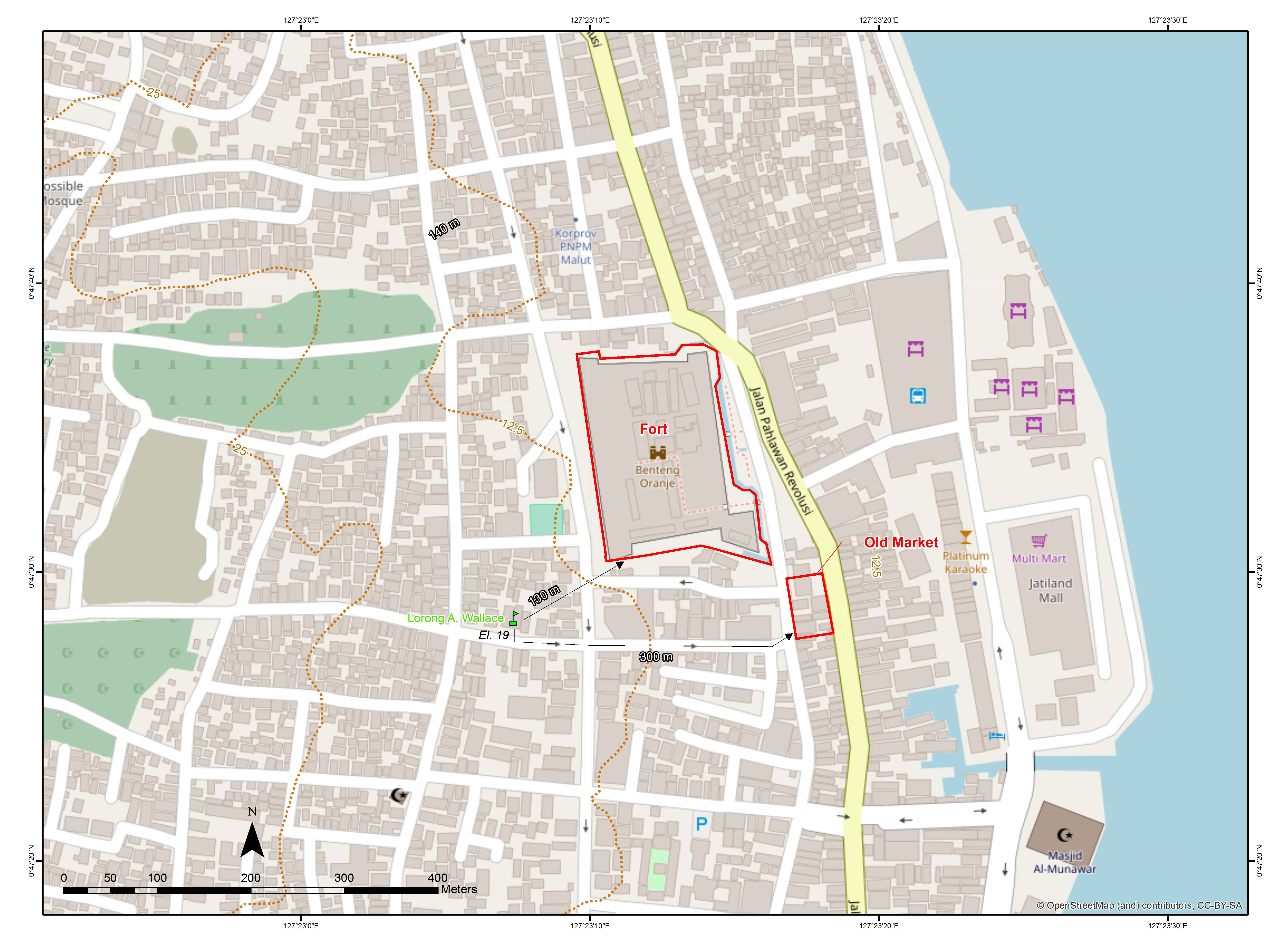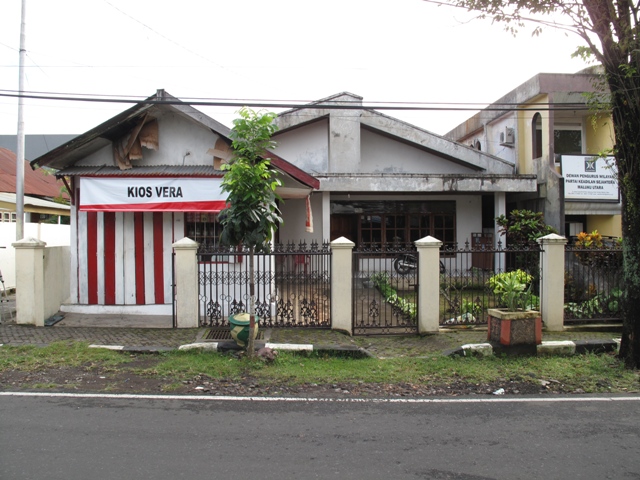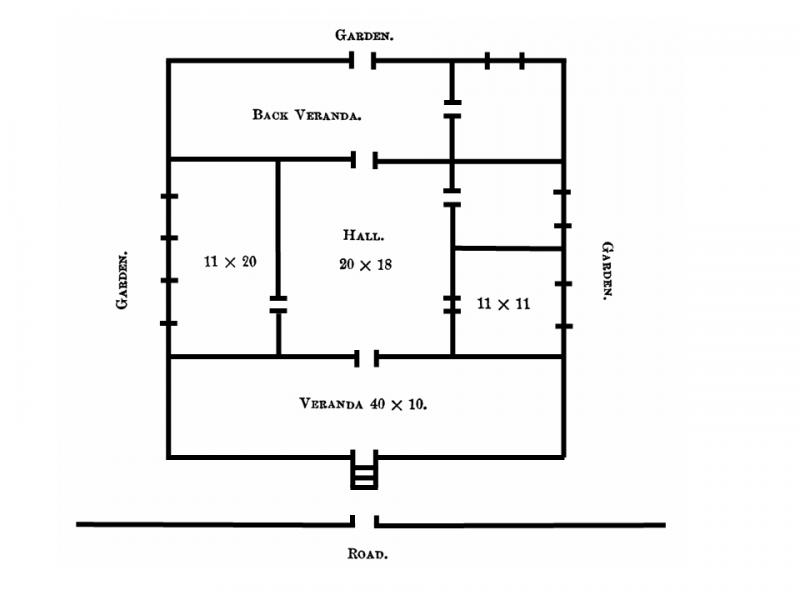By George Beccaloni
(Extensively revised in November 2018)
Ternate at sunset. Copyright George Beccaloni.
The “earthquake-tortured island of Ternate” (as Wallace called it in his famous book The Malay Archipelago) is a small Indonesian island off the western coast of the much larger island of Halmahera. It consists of a very large active volcano (Mount Gamalama, 1,715 m) which is only inhabited around the base and is forested all the way to near the crater. Wallace made Ternate his base during the second half of his collecting expedition to the 'Malay Archipelago' and rented a house there and lived in it on several occasions between early January 1858 and early January 1861. It was whilst he was living there in March 1858 that he famously posted his essay on evolution by natural selection1 to Charles Darwin, and it is because of this that his Ternate house has become legendary.
In his book The Malay Archipelago Wallace writes the following about the house:
"On the morning of the 8th of January, 1858, I arrived at Ternate, the fourth of a row of fine conical volcanic islands which skirt the west coast of the large and almost unknown island of Gilolo [Halmahera]. The largest and most perfectly conical mountain is Tidore, which is over four thousand feet high--Ternate being very nearly the same height, but with a more rounded and irregular summit. The town of Ternate is concealed from view till we enter between the two islands, when it is discovered stretching along the shore at the very base of the mountain. Its situation is fine, and there are grand views on every side. Close opposite is the rugged promontory and beautiful volcanic cone of Tidore; to the east is the long mountainous coast of Gilolo, terminated towards the north by a group of three lofty volcanic peaks, while immediately behind the town rises the huge mountain, sloping easily at first, and covered with thick groves of fruit trees, but soon becoming steeper, and furrowed with deep gullies. Almost to the summit, whence issue perpetually faint wreaths of smoke, it is clothed with vegetation, and looks calm and beautiful, although beneath are hidden fires which occasionally burst forth in lava-streams, but more frequently make their existence known by the earthquakes which have many times devastated the town.
I brought letters of introduction to Mr. Duivenboden, a native of Ternate, of an ancient Dutch family, but who was educated in England, and speaks our language perfectly. He was a very rich man, owned half the town, possessed many ships, and above a hundred slaves. He was, moreover, well educated, and fond of literature and science--a phenomenon in these regions. He was generally known as the king of Ternate, from his large property and great influence with the native Rajahs and their subjects. Through his assistance I obtained a house, rather ruinous, but well adapted to my purpose, being close to the town, yet with a free outlet to the country and the mountain. A few needful repairs were soon made, some bamboo furniture and other necessaries obtained, and, after a visit to the Resident and police magistrate, I found myself an inhabitant of the earthquake-tortured island of Ternate, and able to look about me and lay down the plan of my campaign for the ensuing year. I retained this house for three years, as I found it very convenient to have a place to return to after my voyages to the various islands of the Moluccas and New Guinea, where I could pack my collections, recruit my health, and make preparations for future journeys…
Floor plan of the Ternate house from The Malay Archipelago. Measurements are in feet.
A description of my house (the plan of which is here shown) will enable the reader to understand a very common mode of building in these islands. There is of course only one floor. The walls are of stone up to three feet high; on this are strong squared posts supporting the roof, everywhere except in the verandah filled in with the leaf-stems of the sago palm, fitted neatly in wooden framing. The floor is of stucco, and the ceilings are like the walls. The house is forty feet square, consists of four rooms, a hall, and two verandahs, and is surrounded by a wilderness of fruit-trees. A deep well supplied me with pure cold water--a great luxury in this climate. Five minutes’ walk down the road brought me to the market and the beach, while in the opposite direction there were no more European houses between me and the mountain. In this house I spent many happy days. Returning to it after a three or four months’ absence in some uncivilized region, I enjoyed the unwonted luxuries of milk and fresh bread, and regular supplies of fish and eggs, meat and vegetables, which were often sorely needed to restore my health and energy. I had ample space and convenience for unpacking, sorting, and arranging my treasures, and I had delightful walks in the suburbs of the town, or up the lower slopes of the mountain, when I desired a little exercise, or had time for collecting...
Just below my house is the fort, built by the Portuguese, below which is an open space to the beach, and beyond this the native town extends for about a mile to the north-east. About the centre of it is the palace of the Sultan, now a large untidy, half-ruinous building of stone."
The key information which might enable the location of the house to be identified is as follows:
1) The fort was near the house and below it.
2) The market and beach were five minutes walk away.
3) The Sultan's palace was about half a mile to the north-east of the house.
The house itself might be identifiable by having the structure and floor plan that Wallace described, and the fact that there was a deep well in the garden (whether behind or to one side of the house he doesn't say). However, Wallace himself seems to suggest that the construction of the house was normal for that area, and its floor plan may not be unusual either. Also other nearby houses may have had wells, so the presence of a well in the garden may not itself be proof that it is the house in question.
The location of the house
In the mid 19th century when Wallace rented his house in Ternate, the island and the whole of the surrounding region was controlled by the Dutch. The centre of Ternate town, where the Dutch lived (the "European quarter"), was to the south of "Benteng Oranje" (which has also been called Fort Oranje, Fort Orange or Castle Orange)2. This is the only fort situated about half a mile south of the Sultan's palace. All the other old forts which are south of the palace are a considerable distance away at the southern end of the island.
Wallace says that the fort was "Just below" his house. This narrows down the location considerably, as the only area adjacent to the fort where a one-story house would be *above* the fort's ramparts is to the west and south-west of the fort. Houses on the other three sides of the ramparts would have been *below* them.
A map of the fort area, drawn around 1810 (see below), shows that there was no road and no buildings directly to the west of the fort at that time. Although a map of the fort area published in a 1890 book by de Clercq (see below), shows that a road had been constructed to the west of the fort. De Clercq says that the area behind the fort was a field used as a "drill ground", so it is very unlikely that there were houses between it and the fort. We can therefore discount the road running north-south along the western edge of the fort as being the location of Wallace's house.

Detail of c. 1810 map showing Fort Oranje. [Ternate was occupied by British forces in 1810 before
being returned to Dutch control in 1817. Note the British flag in the fort].

Detail of map of Ternate showing location of Fort Oranje from de Clercq (1890).

Satellite image of Ternate taken in 2010 showing the location of various sites (from Google Earth).
The only other location where a house near the fort would be above the fort's ramparts is the area along the road which runs westwards from the south-western corner of the fort on de Clercq's map above. This road is now named Jalan Juma Puasa and around 2008 a group of Indonesian experts identified a house owned by a Chinese family on the north side of this road as being the most likely location of Wallace's house. Their conclusion was based on interviews with elderly people in the area, plus the fact that the house has a large well on the west side of it (now covered over with concrete). Apparently no other such wells are known in the area, so this provides additional evidence that this is the correct location.
The 'Chinese house' is (i) about 7m above the fort3 and only 130 m in a straight line from its south-western rampart; (ii) it would have taken about 5 minutes to walk to the old market and beach (300m in a straight line from the house); and (iii) the Sultan's palace is exactly half a mile to the north. In addition, it has a well and it's position concords with Wallace's statements that it was "close to the town, yet with a free outlet to the country and the mountain." and that to the west of it "there were no more European houses between me and the mountain." The latter statement suggests Wallace's house was on the western edge of the European quarter, which is where the 'Chinese house' site would have been. Wallace's comment that the house was "surrounded by a wilderness of fruit-trees" also suggests it was on the edge of town, and furthermore that that the area between the fort and the north side of Jalan MT Habib Abubakar Al Attas at its western end, can be discounted as a possible site.
Wallace says the "native town" with the palace at its centre was to the north-east, but the palace is actually slightly to the north-west of this house, so he seems to have made a mistake.

Map showing site of the 'Chinese house' (the green flag). Produced by Paul Whincup, 2018.

Satellite image showing site of the 'Chinese house' (the green flag). Produced by Paul Whincup, 2018.
The house that is now on the plot is a modern construction, so if this plot is indeed the site of Wallace's house then the original dwelling no longer exists. If this site is not in fact the exact one (and the well suggests it probably is) then it is almost certainly very near the correct site.
Interestingly, Wallace's landlord was Chinese4, and de Clercq's map shows that the 'Chinese house' is sited to the south-east of the old Chinese cemetery ("Chineesche begraafplaats").

The 'Chinese house', the probable site of Wallac's house. Copyright George Beccaloni.
The 'Sultan's house'
Some people have claimed that an old house owned by the Sultan of Ternate's family (see blog posts HERE , HERE and HERE) is Wallace's house as it superficially resembles it in its construction. However, the house is nowhere near a fort and is much too close to the palace, so it can be discounted.
Future developments
Given the international significance of Wallace's house and it's great tourism potential for Ternate, it is to be hoped that the site of the 'Chinese house' can be purchased, the house knocked down and a replica of Wallace's house built on the site. The house could house a museum, dedicated both to Wallace and his huge scholarly achievements in Indonesia AND to Indonesian biodiversity, which Wallace, of course, helped so much to document.
Acknowledgements
I would like to thank Paul Whincup, Nicholas Hughes and Kirk Warren for a constructive debate about the house's location. I would also like to thank Haryatiningsih (‘Ning’) Moedjodo (one of the original 'discoverer's' of the 'Chinese house' site) for bringing the 'Chinese house' to my attention in 2012. I am very sorry it took so long for me to accept that this is the most likely site of Wallace's house, but I thought the site which best fitted the evidence was directly to the west of the fort. It was only when Paul Whincup sent me the 1810 map that I realised that this area did not have a road and houses in 1810, and de Clercq's 1890 statement that this area was a field led me to conclude that this could not have been the site of the house.
Endnotes
1. Although Wallace’s essay was marked as having being written on Ternate in February 1858, this cannot have been the case since Wallace’s unpublished Malay Field Journal in the Linnean Society of London shows that he was on Gilolo [Halmahera] during the whole of February, only returning to the neighbouring island of Ternate on 1 March. It is probable that he wrote “Ternate” on the essay simply because this was the island where he had his base, and because it was his postal address. Alternatively, he got the month wrong and should have written “March” instead of “February.” However, this would have been a curious error to make as he wrote a letter to Frederick Bates which he dated 2nd March 1858 (original in The Natural History Museum, London, catalogue number WP1/3/42). Why he never corrected either the date or the place of his discovery in his published accounts of this event is odd. For more information see http://wallacefund.info/content/dodinga-birthplace-wallaces-theory-natural-selection For details about Wallace's discovery of natural selection see http://wallacefund.info/en/biography-wallace
2. Note that Fort Oranje is a Dutch fort - not Portuguese as Wallace stated. However, in the revised 1894 edition of Wallace's book Australasia it says that the fort was reputed to have been built on "the foundations of an old Portuguese structure".
3. The family who live there have suggested that there was an old Portuguese fort on the opposite side of the road to their house, but that it was torn down for building material or was destroyed in WWII. However, if we examine de Clercq's map of 1890 or the map of 1810 (see above), there is no fort shown in that location, so the existence of a fort there is highly questionable. Wallace refered to it as "the fort" which indicates that it was the only fort, or at least the principal fort in the area i.e. it must have been Fort Oranje he was talking about.
4. Wallace writes on page 11 of volume 2 of The Malay Archipelago "Soon after my first arrival in Ternate I went to the island of Gilolo, accompanied by two sons of Mr. Duivenboden, and by a young Chinaman, a brother of my landlord, who lent us the boat and crew."
References
De Clercq, F. S. A. 1890. Bijdragen tot de kennis der residentie Ternate. Leiden: Brill. [See an English translation HERE]

